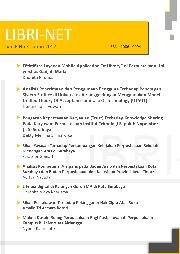Dental Journal (Majalah Kedokteran Gigi)
ISSN 1978-3728
Vol. 44 / No. 1 / Published : 2011-03
Order : 2, and page :7 - 11
Related with : Scholar Yahoo! Bing
Original Article :
Cytotoxicity study of reconstruction plate made of stainless steel 316l compared to commercially pure titanium on baby hamster kidney-21 fibroblast culture
Author :
- Ni Putu Mira Sumarta*1
- Coen Pramono Danudiningrat*2
- Ester Arijani Rachmat*3
- Pratiwi Soesilowati*4
- Department of Oral and Maxillofacial Surgery, Faculty of Dentistry, Airlangga University, Surabaya - Indonesia
- Department of Oral and Maxillofacial Surgery, Faculty of Dentistry, Airlangga University, Surabaya - Indonesia
- Department of Oral Biology Faculty of Dentistry, Airlangga University, Surabaya - Indonesia
- Department of Oral Biology Faculty of Dentistry, Airlangga University, Surabaya - Indonesia
Abstract :
Background: Pure titanium is the most biocompatible material today, and used as a gold standard for metallic implants. However, stainless steel is still being used as implants because of its strength, ductility, lower price, corrosion resistant and biocompatible. Purpose: This study was done to revealed the difference of cytotoxicity between reconstruction plate made of 316L stainless steel and the one made of commercially pure (CP) titanium in baby hamster kidney-21 (BHK-21) fibroblast culture through MTT assay. Methods: Eight samples were prepared from reconstruction plates made of stainless steel type 316L grade 2 (Coen’s reconstruction plate®) that had been cut into cylindrical form of 2 mm in diameter and 3 mm long; and from one made of CP titanium (STEMA Gmbh®) of 2 mm in diameter and 2,2 mm long; and had been cleaned with silica paper and ultrasonic cleaner, and sterilized in autoclave at 121° C for 20 minutes.9 Both samples were bathed into microplate well containing 50 µl of fibroblast cells with 2 x 105 density in Rosewell Park Memorial Institute-1640 (RPMI-1640) media, spinned at 30 rpm for 5 minutes. Microplate well was incubated for 24 and 48 hours in 37° C. after 24 hours, each well that will be read at 24 hour were added with 50 µl solution containing 5mg/ml MTT reagent in phosphate buffer saline (PBS) solutions, then reincubated for 4 hours in CO2 10% and 37° C. Colorometric assay with MTT was used to evaluate viability of the cells population after 24 hours. Then, each well were added with 50 µl dimethyl sulfoxide (DMSO) and reincubated for 5 minutes in 37° C. the wells were read using Elisa reader in 620 nm wave length. Same steps were done for the wells that will be read in 48 hours. Each data were tabulated and analyzed using independent T-test with significance of 5%. Results: This study showed that the percentage of living fibroblast after exposure to 316L stainless steel reconstruction plate was 61.58% after 24 hours and 62.33% after 48 hours. And after exposure to titanium reconstruction plate, the percentage of living fibroblast was 98.69% after 24 hours and 82.24% after 48 hours. Based on cytotoxicity parameter (CD50%), both reconstruction plate made of stainless steel or titanium showed as a non-toxic materials to fibroblast. Conclusion: Both reconstruction plate made of stainless steel and CP titanium were non-toxic to fibroblast, although the stainless steel plate showed lower cytotoxicity level compared to titanium. Therefore a reconstruction plate made from stainless steel type 316L can be used as a safe material for mandibular reconstruction.
Keyword :
Stainless steel plate, titanium plate, cyototoxicity, MTT assay,
References :
Disa JJ,(2007) Mandibular reconstruction Philadelphia : Lippincott Williams and Wilkins
Archive Article
| Cover Media | Content |
|---|---|
 Volume : 44 / No. : 1 / Pub. : 2011-03 |
|













